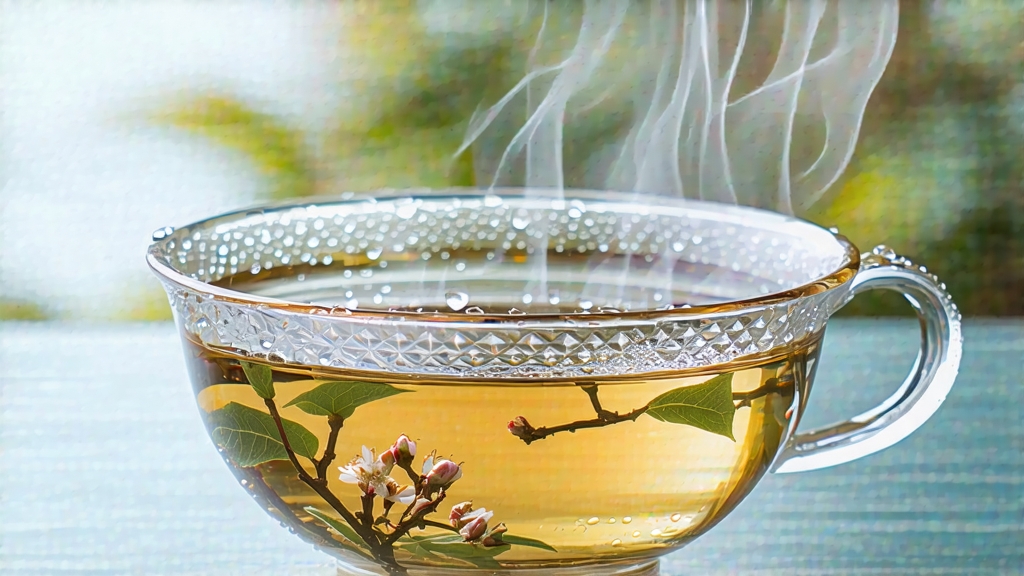
White tea is the most minimally handled of all China’s six great tea families, yet within its airy category one cultivar stands like a solitary moonbeam—Bai Hao Yin Zhen, literally “White Hair Silver Needle.” These down-coated, needle-shaped buds have been plucked for only a few spring days each year for well over a millennium, and to understand them is to understand the Chinese conviction that the highest refinement is often the least intervention.
-
Historical whispers
The first verifiable record appears in the Song dynasty (960-1279) treatise Tea Records of Daguan, where Huizong, an emperor-poet, praises “white buds of unparalleled elegance.” At that time the buds were steamed, pressed and ground for whisked tea; the modern, sun-withered incarnation emerged during the late Ming, when loose-leaf infusion displaced powdered whisking. Export documents from 1891 list Silver Needle shipped from Fuding port to Hong Kong, then onward to San Francisco and London, where Victorian physicians touted its “cooling” properties. During the 1970s state-banquets it served as Chairman Mao’s diplomatic gift to Nixon, earning the nickname “the handshake tea.” Today it remains the priciest white tea at every Chinese auction, with pre-Qingming lots routinely outselling top-grade Longjing. -
Terroir and cultivar
Authentic Silver Needle comes only from the Da Bai (Big White) and Da Hao (Big Down) clonal groups rooted in Fujian’s coastal granite soils. The two townships granted core-origin status are Fuding and Zhenghe, each offering a subtle dialect of climate: Fuding’s marine air produces slender, silvery buds with mango-like sweetness, while Zhenghe’s higher, mistier terrain yields thicker needles redolent of orchid and chilled honey. Neighboring counties now cultivate imitation “Yin Zhen,” but connoisseurs insist the mineral snap of true Fuding buds cannot be counterfeited. -
The craft of “doing nothing”
Harvest opens on the first连续 three days after the spring equinox when the bud reaches 2.5–3 cm but has not yet unfurled into a leaf. Pickers nip the shoot with fingernails, never metal, to avoid oxidation-triggering bruises. A full kilo of finished tea demands roughly thirty-thousand buds, all plucked before ten o’clock when dew still glistens.
Withering is the only processing step: buds are laid two centimeters thick on bamboo trays stacked like screens in a gentle greenhouse called a “withering room.” For forty-eight hours they breathe under natural airflow, 60 % humidity and diffused sunlight that drifts through reed curtains. Masters shuffle the trays every hour so every side receives equal photons; the goal is to coax moisture down to 5 % without ever exceeding 35 °C. No rolling, no pan-firing, no baking—just the slow surrender of water and grassy aldehydes, leaving behind a concentration of amino acids, particularly theanine, that manifests as brothy umami. When the bud’s spine snaps cleanly, the tea is deemed ready. A final charcoal “finishing bake” may last ten minutes, solely to stabilize storage, yet many boutique makers skip even this, preferring the raw solar signature.
-
Grading lexicon
- King Needle: buds >3 cm, 100 % unopened, >95 % silver coverage
- Princess Needle: 2.5–3 cm, slight green tinge on tip, 90 % down
- Common Needle: mixed length, minor leaf expansion allowed, 80 % down
Only King Needle appears at imperial-tribute competitions, where judges weigh fluff density by holding buds against a black velvet board.
-
Brewing the moonbeam
Western ratio: 3 g per 250 ml, 85 °C, three minutes; two infusions.
Gongfu ratio: 5 g in 120 ml gaiwan, 80 °C, flash-rinse followed by steeps of 20 s, 15 s, 20 s, 30 s, 45 s, then minute-long extensions.
Water choice is critical: Silver Needle’s subtle aromatics collapse under hard minerals. Ideal is spring water with 30–50 ppm TDS and neutral pH. Glass or porcelain vessels preserve the pale liquor; yixing clay will smother its delicacy. Observe the ballet of needles—